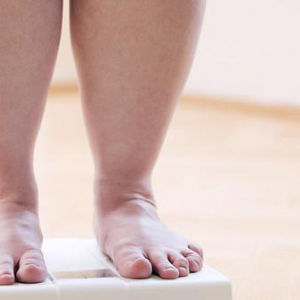
|
A CALORIE is a calorie. Eat too many and spend too few, and you will become obese and sickly. This is the conventional wisdom. But increasingly, it looks too simplistic. All calories do not seem to be created equal, and the way the body processes the same calories may vary dramatically from one person to the next. This is the intriguing suggestion from the latest research into metabolic syndrome, the nasty clique that includes high blood pressure, high blood sugar, unbalanced cholesterol and, of course, obesity. This uniquely modern scourge has swept across America, where obesity rates are notoriously high. But it is also doing damage from Mexico to South Africa and India, raising levels of disease and pushing up health costs. Metabolic syndrome can still be blamed on eating too much and exercising too little. But it is crucial to understand why some foods are particularly harmful and why some people gain more weight than others. Thankfully, researchers are beginning to offer explanations in a series of recent papers. One debate concerns the villainy of glucose, which is found in starches, and fructose, found in fruits, table sugar and, not surprisingly, high-fructose corn syrup. Diets with a high “glycaemic index”, raising glucose levels in the blood, seem to promote metabolic problems. David Ludwig of Boston Children’s Hospital has shown that those on a diet with a low glycaemic index experience metabolic changes that help them keep weight off, compared with those fed a low-fat diet. This challenges the notion that a calorie is a calorie. Others, however, blame fructose, which seems to promote obesity and insulin resistance. Now a study published in Nature Communications by Richard Johnson, of the University of Colorado, explains that glucose may do its harm, in part, through its conversion to fructose. Dr Johnson and his colleagues administered a diet of water and glucose to three types of mice. One group acted as a control and two others lacked enzymes that help the body process fructose. The normal mice developed a fatty liver and became resistant to insulin. The others were protected. The body’s conversion of glucose to fructose, therefore, seems to help spur metabolic woes. You are what you eat, maybe Even more intriguing is the notion that the same diet may be treated differently by different people. Four recent papers explored this theme. In one, published in Science in July, Joseph Majzoub, also of Boston Children’s Hospital, deleted in mice a gene called Mrap2. Dr Majzoub and his colleagues showed that this helps to control appetite. Surprisingly, however, even when the mutant critters ate the same as normal mice, they still gained more weight. Why that is remains unclear, but it may be through Mrap2’s effect on another gene, called Mc4r, which is known to be involved in weight gain. The second and third papers, published as a pair in Nature in August, looked at another way that different bodies metabolise the same diet. Both studies were overseen by Dusko Ehrlich of the National Institute of Agricultural Research in France. One examined bacteria in nearly 300 Danish participants and found those with more diverse microbiota in their gut showed fewer signs of metabolic syndrome, including obesity and insulin resistance. The other study put 49 overweight participants on a high-fibre diet. Those who began with fewer bacterial species saw an increase in bacterial diversity and an improvement in metabolic indicators. This was not the case for those who already had a diverse microbiome, even when fed the same diet. Jeffrey Gordon, of Washington University in St Louis, says these two studies point to the importance of what he calls “job vacancies” in the microbiota of the obese. Fed the proper diet, a person with more vacancies may see the jobs filled by helpful bacteria. In the fourth paper, by Dr Gordon and recently published in Science, he explores this in mice. To control for the effects of genetics, Dr Gordon found four pairs of human twins, with one twin obese and the other lean. He collected their stool, then transferred the twins’ bacteria to sets of mice. Fed an identical diet, the mice with bacteria from an obese twin became obese, whereas mice with bacteria from a thin twin remained lean. Dr Gordon then tested what would happen when mice with different bacteria were housed together—mouse droppings help to transfer bacteria. Bacteria from the lean mice made their way to the mice with the obese twin’s bacteria, preventing those mice from gaining weight and developing other metabolic abnormalities. But the phenomenon did not work in reverse, probably due to Dr Gordon’s theory on the microbiota’s job vacancies. Interestingly, the invasion did not occur, and obesity was not prevented, when the mice ate a diet high in fat and low in fruits and vegetables. The transfer of helpful bacteria therefore seems to depend on diet. Dr Gordon hopes to be able to identify specific bacteria that might, eventually, be isolated and used as a treatment for obesity. For now, however, he and other researchers are exposing a complex interplay of factors. One type of calorie may be metabolised differently than another. But the effect of a particular diet depends on a person’s genes and bacteria. And that person’s bacteria are determined in part by his diet. Metabolic syndrome, it seems, hinges on an intricate relationship between food, bacteria and genetics. Understand it, and researchers will illuminate one of modernity’s most common ailments.
|
一卡路里就是一卡路里。如果吃得多消耗得少,就会变胖并且体弱多病。这是传统认识。但人们渐渐发现这种认识过于简单。所有的热量不是平等产出的,值得注意的是,不同的人的身体在处理相同热量时反应也是各不相同的。 令人惊讶的是,一项有关新陈代谢综合症的最新研究显示,其并发症包括高血压、高血糖、高胆固醇,当然还有肥胖。这种现代病魔已经遍及美国,因为美国肥胖率极高。另外,墨西哥、南非、印度等地由于患病率增加,医疗费用高涨,饱受其害。 新陈代谢综合症可以归咎于过度饮食,缺乏锻炼。但关键的是,要搞懂为什么有些食物危害性特别大,为什么有些人比别人胖。幸运的是,研究人员在最近的一系列论文中进行了解释说明。 其中一种观点认为这种危害源于淀粉食品中的葡萄糖、水果中的果糖、蔗糖和高果糖玉米糖浆。高血糖指数食物增加了血液中的含糖量,引发了新陈代谢问题。波士顿儿童医院的大卫·路德维希医生指出,相比低脂肪饮食,低血糖饮食会改善新陈代谢,帮助患者减肥。这对一卡路里就是一卡路里观念无疑是个挑战。然而,还有些人把问题归咎于果糖,认为果糖造成了肥胖和胰岛素抗性。科罗拉多大学博士理查德·约翰逊近日发表在《自然通讯》的文章解释说,葡萄糖的危害一部分是通过转化成果糖产生的。 约翰逊博士及其同事曾用老鼠做了水和葡萄糖饮食试验。老鼠分三组,一组为控制组,另外两组为对照组,对照组进行缺酶喂养,酶能帮助身体处理果糖。结果控制组老鼠变胖并产生胰岛素抗性。另外两组则没发生这种情况。因此,身体在葡萄糖到果糖转化中,会诱发新陈代谢问题。
一个更有趣的观念是同一饮食习惯对不同的人会产生不同的效果。最近的4篇论文探究了这个话题。其中一篇是《科学》杂志7月份刊载的,作者是约瑟夫·马吉祖布,同样来自波士顿儿童医院,他删除了老鼠的Mrap2基因。马吉祖布博士及其同事表示这样能控制老鼠食欲。然而令人惊奇的是,即使基因突变生物体与控制组老鼠吃得食物一样,它们的体重还是增加得更多。原因尚不清楚,但有可能是Mrap2的缺失影响了基因Mc4r,因此人们认为Mc4r也与体重增加诱因有关。
来自圣路易斯华盛顿大学的杰弗里·戈登表示,这两项研究表明胖人体内微生物区的“职位空缺”作用非常重要。适当的饮食可能增加人体内的有益细菌,从而填补空缺的职位。第四个实验论文由戈登博士最近发表在《科学》杂志,他也是用老鼠做实验。为了控制遗传因素的影响,戈登博士找了4对人类双胞胎,一组肥胖,一组纤瘦,他收集了他们的粪便,然后把人类双胞胎基因移植到老鼠身上。老鼠饮食完全相同,从肥胖型双胞胎移植基因的老鼠变胖了,而从纤瘦型双胞胎移植基因的老鼠仍然偏瘦。 然后戈登博士对喂养在一起的带有不同细菌的老鼠进行了测验,发现老鼠粪便能传播细菌。源于偏瘦型老鼠的细菌成功转移到了带有肥胖型双胞胎细菌的老鼠身上,从而阻止了这些老鼠变胖,并引发了其他新陈代谢异常。但细菌没有反向转移,这可能由于戈登博士的职位空缺理论。有趣的是,当老鼠进行高脂肪、少水、少蔬菜饮食时,细菌转移没有发生,也未能阻止肥胖。因此这种有益的细菌转移似乎取决于饮食。 戈登博士希望能够认识到特定的细菌,并最终能把它分离出来,以治疗肥胖。但现在,他与其他研究人员正在探索不同因素之间复杂的相互作用。 不同的卡路里新陈代谢方式可能互不相同。但是特定的饮食习惯所产生的影响取决于一个人的基因和体内细菌。而一个人的体内细菌一定程度上又取决于饮食习惯。新陈代谢综合症似乎使食物、细菌和遗传交织在一起。只有搞懂其中复杂的联系,研究员才能解释现代通病中的肥胖问题。 相关阅读 (译者 00superman 编辑 丹妮) |